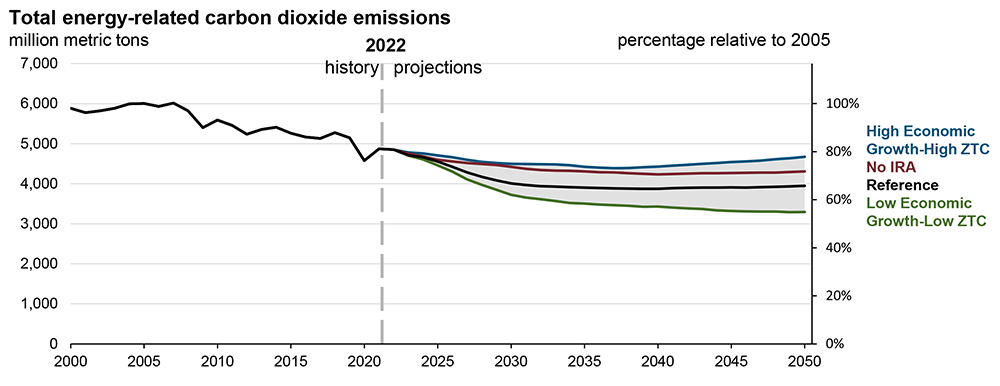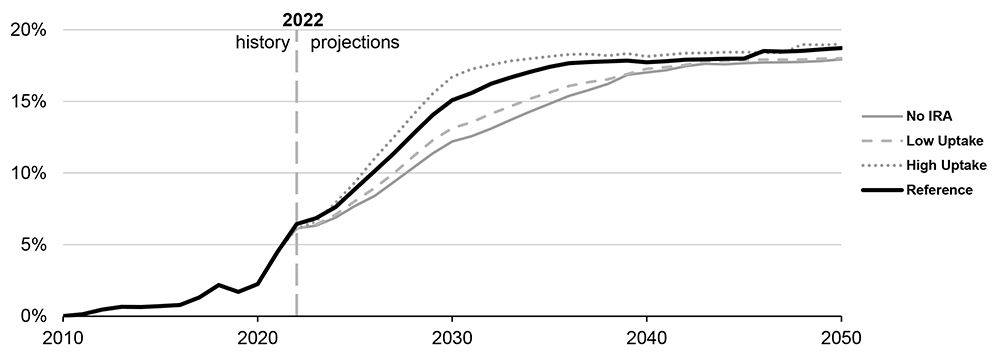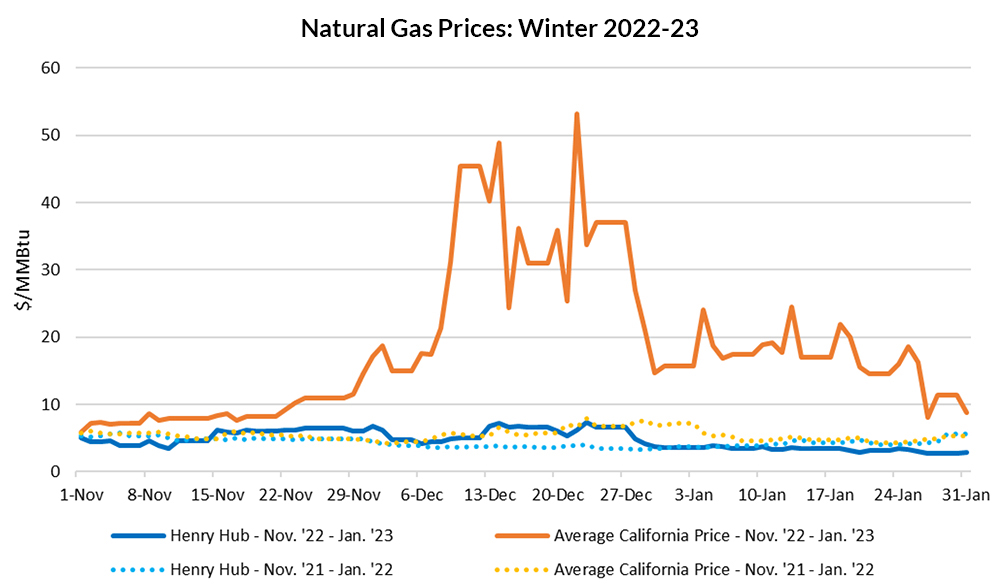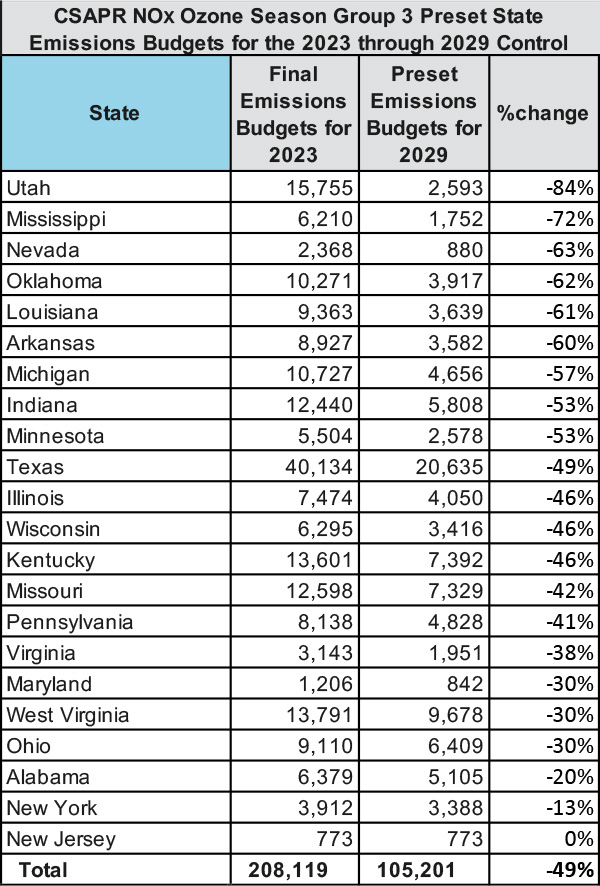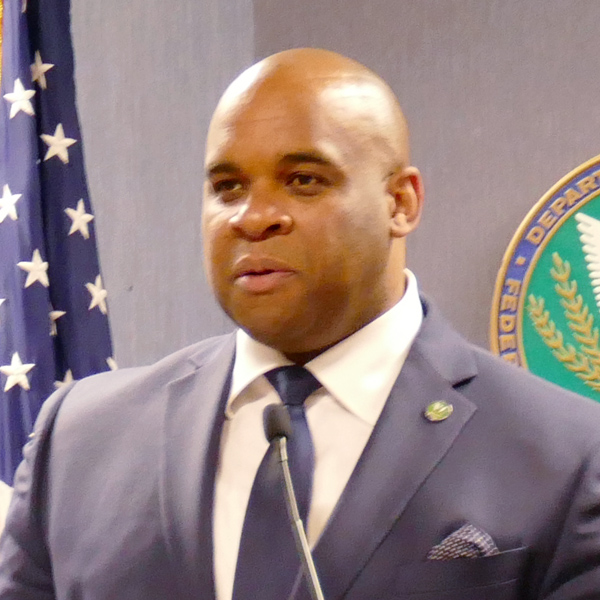The answer to the question of whether the U.S. can reliably decarbonize its electricity grid while electrifying most of its economy usually comes down to perspective — and how the question is framed.
For a media briefing on Monday, the U.S. Energy Association approached it with a sense of alarm and urgency as a “crisis ahead for electric utilities as electrification picks up.”
“The world’s greatest machine, the U.S. electricity supply system, will begin to sputter in a few years as more is asked of it than it can deliver with its present resources and constraints,” the USEA said in its invitation for the online event. “There is fear in the industry that it is heading toward a time when it can’t produce and deliver the amount of power the increasingly electrified world will need.”
 Louis Finkel, NRECA | USEA
Louis Finkel, NRECA | USEASpeaking on a panel at the briefing, Louis Finkel, senior vice president of government relations at the National Rural Electric Cooperative Association (NRECA), acknowledged the opportunities in the country’s ongoing energy transition, but focused more on the “huge risk” now playing out in real-time.
Pointing to concerns raised by the National Academies of Science and NERC, Finkel said, the U.S. would need to increase generating capacity 170% “just to facilitate a surface transportation fleet transition … all while we have a disorderly retirement of baseload power.”
His frame of reference, he said, is rooted in NRECA’s 900 member cooperatives, which serve “92% of the persistent poverty counties in America,” where affordability and reliability are imperative.
Arguing for maintaining fossil fuel generation, Finkel said, “You need dispatchable power to keep the grid afloat, and you have to acknowledge that a megawatt of dispatchable power is not a megawatt of [intermittent] wind and of solar; the capacity factor is different.”
But Emily Fisher, general counsel at the Edison Electric Institute (EEI), countered that cross-industry conversations such as the USEA briefing should inspire optimism “that we can make it through this transition and provide customers resilient, clean power. I think we all know where we’re going, and there are going to be some challenges to getting there, but given the way that we operate and regulate the electric system in the U.S., it’s going to be a multistakeholder effort.”
 Ron Schoff, EPRI | USEA
Ron Schoff, EPRI | USEARon Schoff, director of renewable energy and fleet enabling technologies at the Electric Power Research Institute (EPRI), said the problems of decarbonizing the grid while slashing greenhouse gas emissions are daunting but solvable.
EPRI expects U.S. renewable capacity will grow from 230 GW at present to 600 GW by 2030 as sales of electric vehicles, electric heat pumps and other electric appliances grow. Integrating those resources will “require system-level thinking to ensure that as we progress through the stages of decarbonization we are maintaining reliability, … affordability and … the level of service that our customers and people ultimately expect and, by the way, are increasingly dependent on as we start to shift to more electrification.”
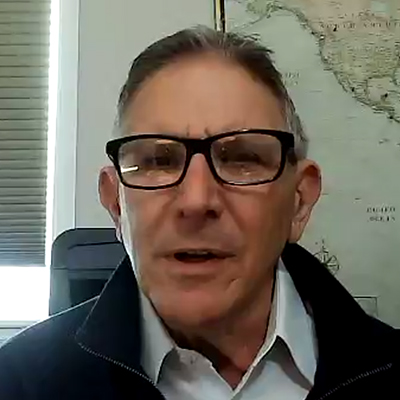 John Di Stasio, Large Public Power Council | USEA
John Di Stasio, Large Public Power Council | USEAJohn Di Stasio, president of the Large Public Power Council, which represents the country’s 27 largest publicly owned utilities, said he was less pessimistic than “realistic and maybe pragmatic.” His topline concerns included the need for “permitting reform” and the decade-long lead times needed to build transmission or other large energy projects.
“We need a lot more coordination and harmonization to facilitate some of the aspirations that had been stated, and then … we really need every resource that we have, and that means natural gas,” Di Stasio said. He predicts ongoing complexity as the grid changes from an inertia-based system to a fully digital system “and trying to manage that from a compliance and reliability standpoint.
“We need to be optimistic, but [with] eyes wide open and making sure we’re covering all our bases as we go forward,” he said.
The End Mix
Federal and state policies have become key drivers for decarbonization and electrification, including President Biden’s goals of cutting U.S. GHG emissions 50 to 52% from 2005 levels by 2030 and decarbonizing the grid by 2035. The Infrastructure Investment and Jobs Act and Inflation Reduction Act contain a range of incentives for clean technologies, such as the IIJA’s $7.5 billion to build out a national network of 500,000 EV chargers and the IRA’s EV tax credits and heat pump rebates, all of which have set off a growing wave of private investment.
State-level policy is also pushing electrification forward, such as California’s Advanced Clean Cars II rule, which will require all new passenger cars, SUVs and light-duty pickup trucks sold in the state to be zero-emission vehicles by 2035. Eight additional states have either adopted the rule or are working toward adopting it.
At the same time, a range of industry voices, such as NRECA CEO Jim Matheson, have repeatedly said decarbonizing the grid by 2035 is unrealistic or not possible. RTOs and ISOs have said it could take years to upgrade and build out their systems to integrate the 1,400 GW of power capacity ― mostly solar, wind and storage sitting in their interconnection queues.
And while the need to update and streamline permitting processes in the U.S. has become a major bipartisan concern, bipartisan solutions remain elusive.
The catch, according to Schoff, is that solutions will have to evolve with technology as electrification and renewables on the grid increase.
“Do we have distribution transformers that are up to the task of everybody on my street having an EV with a fast charger on their wall or in their garage?” he said. An understanding of the regulatory and economic environments in which clean technologies will be deployed will also be essential, he said.
A mix of resources ― solar, wind, nuclear, hydro and natural gas ― will be critical to maintain reliability, but the amounts needed of each will also continue to change, Schoff said. “Whatever we’re going to end up [with] in 2050 or some future endpoint, it’s going to not look like that along the way.
“We’re going to have to progressively march our way through, and we have to manage risk at every point,” he said.
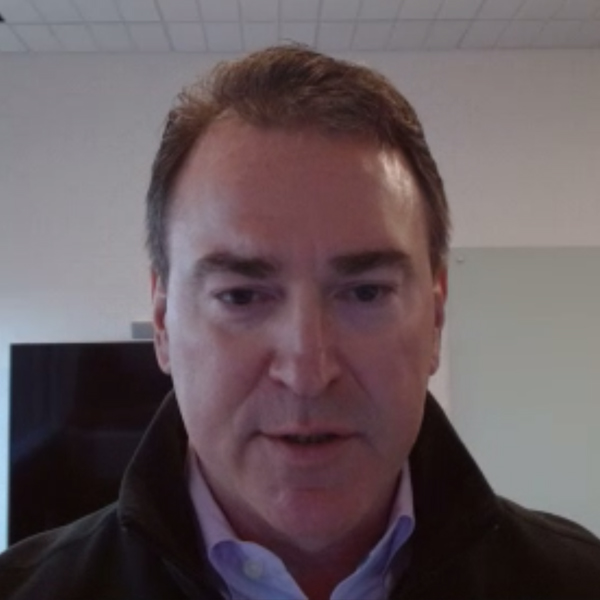 Todd Ramey, MISO | USEA
Todd Ramey, MISO | USEATodd Ramey, MISO’s senior vice president for markets and digital strategy, said the 171 GW of generation in the RTO’s interconnection queue — 95% of which is solar, wind and storage — would far exceed the RTO’s current 130 GW load, but putting those resources on the system would “drastically change the reliability characteristics of operating this fleet.”
“The only way to do that reliably is through extensive collaboration and coordination across participants, local regulators, state regulators and federal regulators, so that we have the information we need to make good choices, and it’s going to be a lot more dynamic than it’s ever been,” Ramey said.
The increasing frequency and severity of extreme weather events — like the winter storms in Texas in 2021 and in the Midwest and Mid-Atlantic in December 2022 — add another layer of complexity to the resilience challenge, Schoff said.
“You [need to know] whether wind turbines are able operate under certain circumstances, whether you have or need an enclosure around a natural gas plant, whether your coal pile may freeze, understanding the limitations potentially of natural gas,” he said.
Ramey agreed that “weather-dependent outages of fossil fuel-fired resources” have become a key issue, which will affect “the complexity of modeling and planning going forward. To the extent that there are resources that are not well-prepared to operate through extreme weather, that’s going to have effects in the way the resources are accredited,” he said.
Focus on Resource Attributes
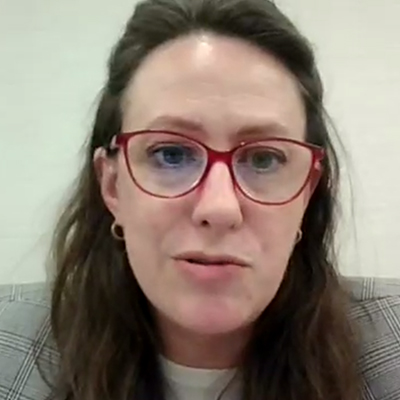 Emily Fisher, EEI | USEA
Emily Fisher, EEI | USEAEEI’s Fisher believes that a “broadly interconnected” system must be part of the solution for reliability and integrating renewables onto the grid.
“I actually find some of the distinctions between baseload and peaking a bit artificial in the current environment. Any resource can provide what is needed at any given moment in time, if it’s available,” she said.
“But a lot of that has to do with how broadly interconnected the system is. One of the true benefits of a broadly interconnected system is we’re able to rely on resources across a vast geography and that allows us to address some of the intermittency concerns” of renewables, Fisher said.
Both she and Di Stasio talked about the parallel evolution of utility planning processes. “You’re constantly in a planning process versus having a one-time plan and then you execute it over a decade,” Di Stasio said. He noted that his member utilities now plan with an eye to the attributes of resources and how they work together, rather than focusing on resource types.
“How do you get something that’s optimal versus just trying to do something that’s possible with one resource?” he said.
However, resource planning has its own challenges, Schoff said. “It’s so sensitive to the assumptions that are entered by the modelers for what the technologies are capable of and what they will cost. … We need to understand the system in which new assets will operate in and understand what they will have to be capable of.
“Will it be OK to build … wind and solar that are for the most part energy producers without a lot of dispatchability, or should we be including energy storage and some additional dispatchable technologies?” he said.
The decision might come down to interconnection requirements, market signals and technological advances, “but the system-level thinking about what that operation is going to look like needs to start informing the capital investment decisions for new projects as we go forward,” he said.
The role of demand-side management and the potential integration of distribution and transmission systems was also discussed.
While demand management occurs at the distribution level, Ramey said a key trend will be “the need to integrate load management into wholesale operations, blurring that current distinction between distribution and transmission.”
It may be a big leap for MISO and its members who rely on the RTO to operate the transmission side of their businesses, Ramey said, but “we’re all expecting the distribution system to be much more dynamic going forward. So, one of the challenges is to build on MISO’s current technology systems to start covering and penetrating and getting more information about the distribution system so we can optimize that interface.”
Schoff said more load management technologies will be needed. “The more loads you have that are controllable, the less pain each one of those loads will have to experience when you’re trying to manage the load on the grid,” he said. “We see a system coming forward that is much more dynamic on the demand and the supply side, and ultimately the grid in the middle is going to have to be able to manage that really effectively.”
